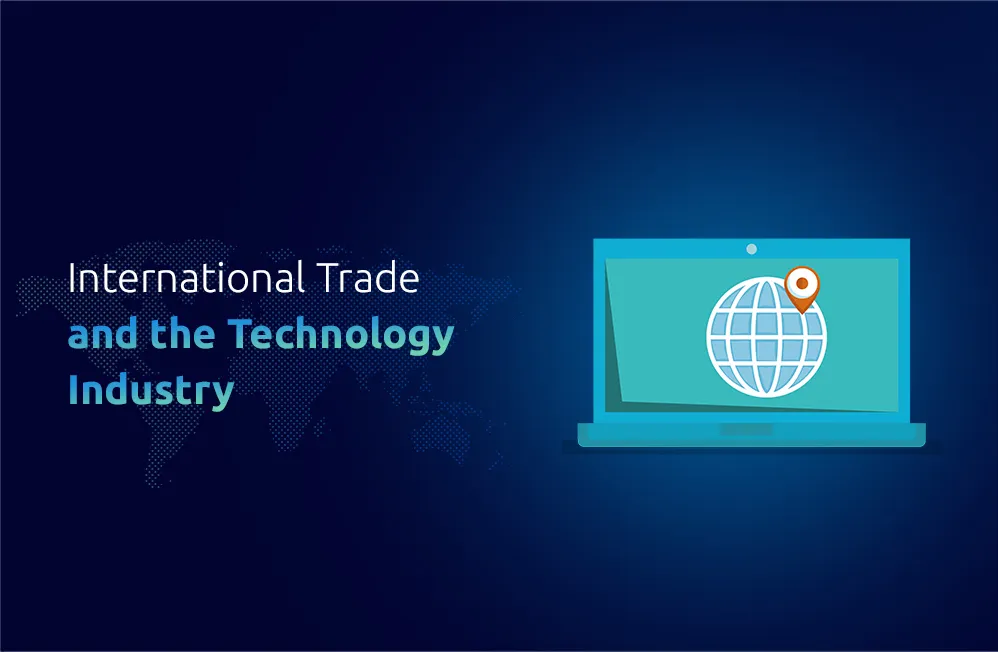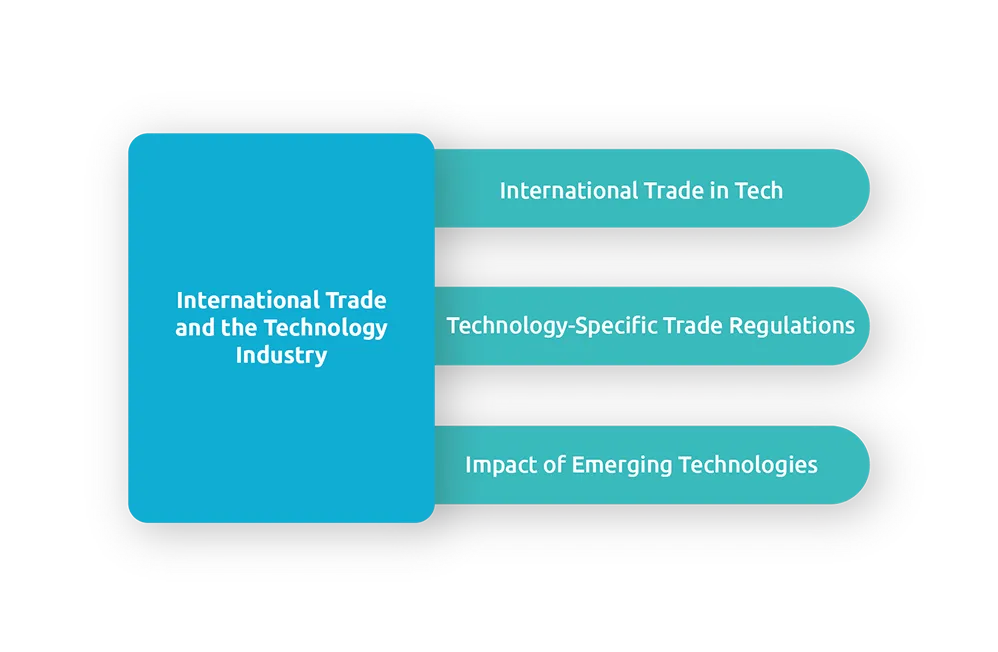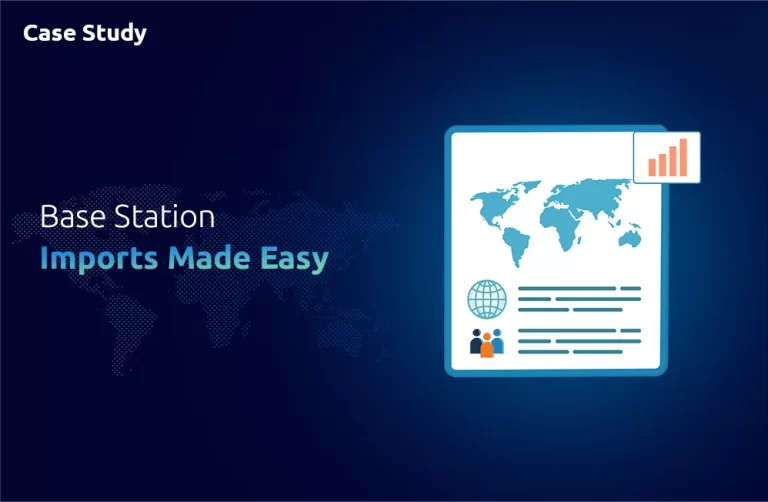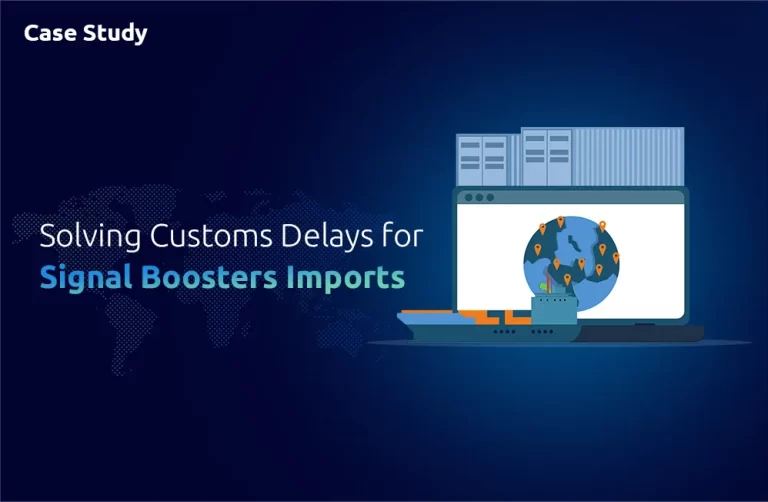Trade has always been at the core of international economic growth, yet few industries have had as much an effect as technology companies in shaping it. From consumer electronics and software development to telecom services and IT infrastructure development, technology industries form the core of international trade.
With countries becoming more connected through digital platforms and e-commerce, technology’s role in international trade continues to transform and grow. This post explores the complex dynamics of global technology trade, analyzing its complex workings as we look at trade agreements, regulations, innovation, and their effects on global markets. We will also take a closer look at which countries contribute to international technology trade, the challenges it presents businesses with, and strategies they can employ to navigate this rapidly shifting terrain successfully.
With international trade and technology changing faster than ever, businesses are looking for ways to fix problems of international trade. Global trade and development challenges include supply chain risks and cyber threats. With the ever-evolving nature of tech impacting international business dynamics, there is a requirement for new ways to tackle these challenges and facilitate cross-border operations. These innovations enable organizations to not only navigate the complexities of trade but also to seize emerging opportunities in global markets.
Technology’s Growing Importance | Global Trade
Technology has revolutionized our lives in every conceivable way from how we communicate to how we work & trade. The tech industry consists of hardware, software, semiconductors, telecom services & data services that increasingly play an essential role in global trade flows.
International trade in information and communication technology/ICT goods earned $2 trillion, accounting for 11.2 percent of world trade in 2022. Leading players include the US, China, South Korea, Japan, and Germany in this global tech trade arena. The United States leads in software and IT services globally, while China dominates as an exporter and producer of electronics and telecom equipment.
South Korea stands out with its strong semiconductor and display panel industries; both nations remain key global players. India and Singapore are becoming rapidly emerging hubs of software development and cloud computing services. Demand for tech equipment and services has driven an explosion in international trade of tech equipment and services, spurred on by digital transformation across industries, government policies encouraging innovation, and greater access to global markets. As tech becomes a vital part of everyday life, both developed and developing nations strive to harness global technology trade for economic advantage.
Key Elements of International Technology
The global technology trade is driven by many key factors, including supply chains, regulations, innovation and emerging markets. Technology manufacturing relies heavily on complex global supply chains with materials coming from countries like China and Vietnam and development occurring primarily in North America and Europe. COVID-19 pandemic exposed vulnerabilities with regards to semiconductor shortages; further emphasizing the need for diverse supply chains.
Trade agreements such as those from the WTO or USMCA regulate how tech goods and services cross borders. Policies like the EU’s GDPR influence data privacy management while agreements such as CPTPP promote digital trade by lowering tariffs and encouraging innovation.Emerging technologies like AI, IoT, and 5G are opening up exciting trade opportunities; countries such as the US, China, India, and Israel lead in research and development efforts while emerging markets like Africa Southeast Asia Latin America experience rapid digital expansion, particularly within mobile technology and fintech applications.
Cross-border e-commerce and digital services such as SaaS and cloud computing are growing quickly, with platforms such as Salesforce and Microsoft providing global access. Countries like Singapore, the US, and the EU serve as digital trading hubs while countries with restrictive data laws like Vietnam are working hard to enter this sector of the economy.
Challenges and Opportunities in Global Tech Trade
With global tech trade continuing to increase, businesses face both obstacles and opportunities in navigating international markets. One significant challenge stems from tariffs and trade barriers, which can increase costs while decreasing the competitiveness of electronics and telecom goods. Another likely problem lies with intellectual property theft, especially in markets with inadequate IP protection regulations.
As technology develops, it becomes a vital part of daily life; cybersecurity & privacy matters become more critical, with differing data protection regulations between countries complicating matters further.
Arising markets across Africa, Asia, and Latin America hold vast unrealized potential; growing smartphone usage and e-commerce usage open doors for tech exports. Furthermore, digital trade agreements help businesses by reducing barriers and compliance costs that have previously prevented access to international markets.
Conclusion:
Technology industries play a pivotal role in international trade, driving innovation and providing businesses with new opportunities globally. As demand for digital services, data solutions, and technological infrastructure increases worldwide, navigating global markets becomes ever more crucial; businesses must stay aware of regulatory changes, geopolitical uncertainties, and fast emerging tech trends to maintain their competitive advantage and stay ahead of regulatory requirements and technological innovations so as not to fall behind their competitors.
At ONE UNION SOLUTIONS, they specialize in navigating the complexities of international trade for tech firms – providing expert assistance in managing compliance issues, efficient logistics management, and timely deliveries to help businesses expand into international markets seamlessly while still meeting core operations standards.
Did you know,
By 2023, the international cloud computing market has reached an estimated value of about $480 billion and is projected to grow at a compound annual growth rate of 17% between now and 2027
- What part does technology play in global trade?
Ans: Technology facilitates cross-border trade by encouraging innovation, creating digital platforms and improving supply chain management.
- Which countries lead global tech trade?
Ans: The United States, China, Japan, South Korea, & Germany are leading participants in the global technology trade in the electronic, software, and telecom sectors.
- What are the key challenges associated with international tech trade?
Ans: Supply chain disruption can result from tariffs, intellectual property theft, differences in cybersecurity measures or geopolitical pressures that risk global supply chains.
- How are digital trade agreements impacting tech exports?
Ans: Digital trade agreements help remove trade-related barriers such as tariffs and promote cross-border data flow, making expansion into new markets much simpler for businesses.
- What technologies are impacting global trade?
Ans: Artificial Intelligence (AI), 5G wireless networking technology, blockchain and IoT are transforming industries worldwide and driving up the trade of digital services and tech equipment globally.












